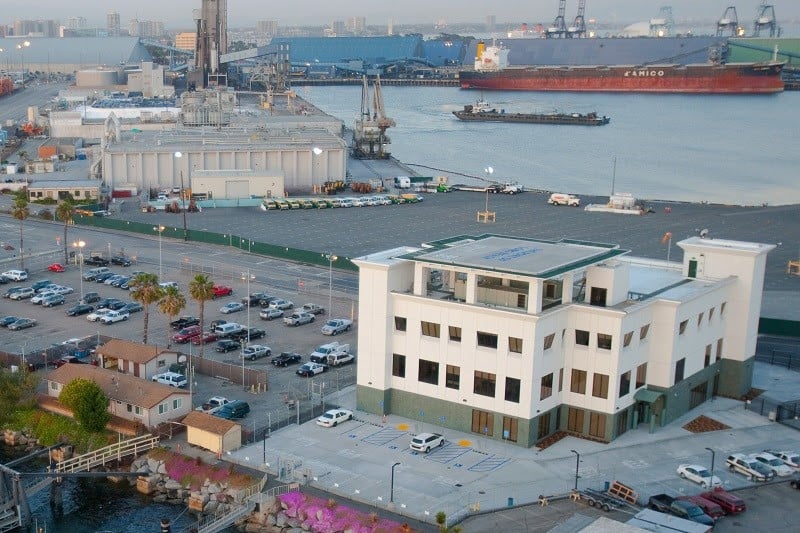
Port of Long Beach receives grant for Energy Resiliency Project
The Port of Long Beach will build and demonstrate a $7.1 million “microgrid” to show the promising new technology’s effectiveness in providing a clean, reliable supply of electricity for critical operations at the nation’s second-busiest seaport.
With the help of a $5 million grant from the California Energy Commission, the Port will install a solar carport, power storage systems and advanced controls at its security headquarters, the Joint Command and Control Center.
“Ensuring a stable supply of energy is crucial to the zero-emissions future the Harbor Commission envisions for the Port of Long Beach,” said Long Beach Board of Harbor Commissioners President Tracy Egoscue. “We welcome this microgrid technology demonstration in Long Beach.”
“Our terminals are increasingly using electric equipment to move cargo and we will need to build more energy resiliency into these operations,” said Port of Long Beach Executive Director Mario Cordero. “This project will help us learn more about how to keep the power, and cargo, flowing.”
As part of the project, the Port will compile and analyze 12 months of performance data, and make that information available to other California seaports. The goal of the California Energy Commission’s grant is to accelerate development of microgrids, which are seen as important tools for improving effectiveness of renewable energy. And, because they offer a means of isolating from the grid, microgrids can improve participation in utilities’ demand response programs, where users agree to limit energy use during peak periods.
The project also includes a workforce development component that will offer training opportunities through Long Beach City College and the International Brotherhood of Electrical Workers.
Schneider Electric, an international leader in energy management projects, will design, construct and commission the Joint Command and Control Center microgrid. The project includes a solar carport at the Port’s security center, a stationary storage system and a mobile storage system that can be dispatched around the Port in lieu of diesel generators in case of outages.
The Port of Long Beach is one of the world’s premier seaports, a gateway for trans-Pacific trade and a trailblazer in goods movement and environmental stewardship. With 140 shipping lines connecting Long Beach to 217 seaports, the Port handles $194 billion in trade annually, supporting thousands of Southern California jobs.









